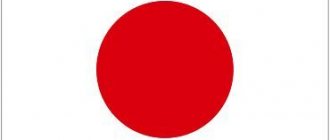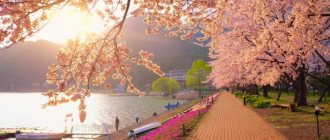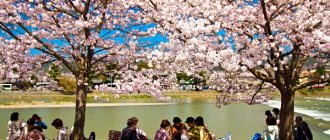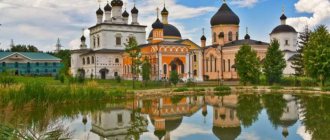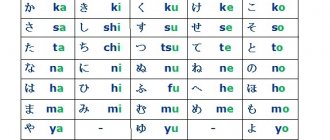HomeNews ATOR Bulletin
26.03.2021
There are many stereotypes around Japan that prevent tourists from properly planning the logistics of their trip and the conditions of their stay in this amazing country. We debunk myths and provide useful life hacks. Bookmark our mini-guide.
STEREOTYPE No. 1. JAPAN IS A SMALL COUNTRY
Let's start with geography. The first stereotype states that Japan is a “small country.” You don't need to look for a map to see otherwise. Here are just a few numbers and facts. The country's length from north to south is about 3,000 km, equivalent to one third of the Trans-Siberian Railway, the longest railway in the world.
Japan has different climate zones: if in the north of the country, on the island of Hokkaido, the climate is close to the climate of the Far Eastern region of Russia, then in the south, on the island of Okinawa and on the southernmost Tokyo Islands, it is already hot and subtropical.
Developed and well-thought-out transport links help you move quickly around Japan, but you will still have to spend several hours on the road. So, a flight from Hokkaido to Okinawa will take about 4 hours. The same amount will be needed for air travel from Tokyo to the southern Tokyo Islands. The Shinkansen (train) from Tokyo to Hakata (Fukuoka) takes 5 hours, from Tokyo to Aomori - about 4.5 hours.
Where to look for luck?
One of the symbols of the Japanese capital is the 634-meter Skytree, the tallest television tower in the world. You can easily spend a couple of hours here: several observation platforms at an altitude of 345 and 450 meters, view restaurants and cafes, a glass floor, upon which you can stand on the skating rink below, many souvenir shops, interactive maps of the city. From the TV tower you can clearly see the Japanese brewery building, topped with a strange golden object. According to the architect's plan, the sculpture symbolized the fire that should burn in the souls of the company's employees, but the sculpture stubbornly refused to stand vertically. It was eventually left lying on the roof, and the people of Tokyo immediately dubbed the object the "Golden Turd". Which is also not bad, because in Japan it is a sign of increasing wealth. There are even special gift poops covered in gold leaf and packaged in expensive lacquer boxes. A popular gift for those you wish to prosper. Prosperity is also brought by Tanuki, a fabulous creature in the guise of a raccoon dog with large eggs. In Japanese fairy tales, Tanuki is a rather ambiguous character. Roguely and with gangster habits, but the size of the eggs decides everything - it is no coincidence that Tanuki figurines are installed in front of hundreds of Japanese restaurants, attracting good luck and success. There are even temples dedicated to Tanuki, where people who want to get rich come to pray. But serious Japanese businessmen go for good luck not to Tanuki, but to the Fox Temple near Tokyo. On the first day of the New Year, you can meet the presidents of Hitachi, Panasonic and other serious companies here.
Skytree Tower is one of the symbols of Tokyo.
STEREOTYPE No. 2. JAPAN IS A VERY EXPENSIVE COUNTRY
Let's begin to destroy the second popular stereotype: Japan is a very expensive country to travel. If you set your priorities correctly and sacrifice some non-essential factors on your trip, then a tour to Japan will turn out to be quite reasonable in terms of budget.
For example, it is not at all necessary to book an expensive hotel. As in any other country in the world, a 5* hotel with a beautiful view from the window and a convenient transport location will not be cheap. You will have to pay more for comfort, star rating and other amenities both in Moscow and Tokyo.
In Japan, you can safely choose 2 and 3* hotels that offer compact rooms. As a rule, such hotels are initially designed for business tourists traveling without large luggage. Such hotels have everything you need, the rooms are clean and tidy, and all conditions for a comfortable stay are created.
It is also possible to book a hotel without breakfast included in the price. As a rule, breakfast in business hotels lasts until 9 am, and not all tourists have time to take advantage of it. Why pay extra for a hotel with breakfast that you won't be able to go to anyway?
You can save on accommodation if you choose a hotel with eco-options. Simply put, this is accommodation without room cleaning. Sometimes hotels do not reduce the price for a room, but reward the guest with pleasant bonuses, for example, a free cup of coffee.
Another recommendation that will help you save on accommodation in Japan concerns the location of the hotel. In major cities of Japan, be it Tokyo or Kyoto, there is no such central and universal point from where you can get to all tourist locations at once, so you should not focus on living in the center.
A hotel not in the center, firstly, will cost less, and secondly, transport costs in this case will be several times less than the amount of overpayment for accommodation in the central part of the city.
When planning a trip to Japan, it is important to choose the right travel dates. The Japanese willingly travel around their native country, often with their families. And during peak periods of such massive domestic travel, for example, when the cherry blossoms, hotels naturally cost more for foreign tourists.
Sakura in Japan blooms in different regions at different times, so you can go not only to Tokyo, but also to other cities, where it will be no less beautiful, but at the same time hotel accommodation will be more affordable.
Many tourists dream of finding the “real Japan”. For such an atmosphere you need to go outside of Tokyo. So, you can consider staying in the city of Kawagoe, where there are many beautiful old houses. Actually, in Kawagoe, which is also called “little Edo,” you can see what Tokyo was like before it became a metropolis.
Another convenient place to live outside the Japanese capital is the city of Tachikawa, from which it is convenient to travel to cities west of Tokyo, and to the capital itself. Beautiful mountain scenery will delight those who stay in the city of Hachioji, from which it is also easy to get to Tokyo.
The city of Kawasaki is located between Tokyo and Yokohama: it is convenient to travel to Kamakura from here. In addition, there is also a lot of interesting things to do in Kawasaki. We are sure that even experienced tourists have never been on a night tour of illuminated factories. There is such a tour in Kawasaki. This city also has a nice children’s museum and a beautiful open-air architectural park.
During the low season, you can choose to stay in Kyoto. Cheap hotels can be found in Otsu and Kobe, cities located near Kyoto.
Current state of Japan
The demographic factor played a significant role: the low proportion of older residents, who, as a rule, save the least
6 Current state of Japan
Japan today is one of the most highly developed countries with enormous economic, scientific, technical and financial potential. According to quantitative and especially qualitative criteria, it is firmly entrenched in 2nd place, and in a number of areas in 1st place.
Japan, which has the largest budget deficit, has been spending frugally for several years. But there is one item of budget expenditures that not only is not being reduced, but is also acquiring additional funds. This is science and technology. Currently, the Japanese government spends twice as much on basic research as the private sector, allocating more than $1 trillion. 600 billion yen in those sectors considered priority: information technology and telecommunications, environmental science, nanotechnology, materials and biology. To encourage companies to increase R&D spending, the government introduced tax incentives. According to the Ministry of Trade and Industry, Japan invests almost 3.5% of its GDP in R&D, surpassing the US (2.8%), Germany (2.5%) and the UK (2.2%). As a result, Japan maintains an exceptionally strong position in patents, outpacing the United States by approximately a 2:1 ratio. Japan has a strong position in the electronics industry, where patents are much easier to obtain, and a relatively weak position in the life sciences industry, which is a US specialty, where it is much more difficult to achieve patentable scientific breakthroughs. However, staying on top is still difficult. Japan has become a rich country, following the most developed economies on the technological ladder. Now that other economies are trying to emulate it, Japan is doing everything it can to maintain its superiority over them. [20]
Today, exports continue to be the main driver of Japan's economic recovery. Japan's trading asset in 2000 increased by 3% compared to 1999. Computers, cell phones, and cars were in particular demand on the foreign market. The second most important factor in Japan's economic development was government spending. In November 1999 Parliament approved more than $100 billion in government funding for public works and tax breaks for small businesses.
After the crisis of the mid-90s in 2003, the situation in Japan improved. Over the last three months of 2003, the Japanese economy showed phenomenal growth for this country - 7% year on year. (Figure 1)Such rates have not been seen here since the 1980s. Japan's total GDP growth was 2.7% in 2003. This is slightly lower than in the USA (3.2%), but higher than in the UK (2.1%), Canada (1.7%) and even more so in the euro area (0.5%). In the last quarter, with their 7%, the Japanese overtook the Americans (in the USA - only 4%).
The main reason for Japanese growth is progress in the reconstruction of the financial sector, recovery in consumer demand and growth in exports. In 2003, for the first time in four years, the number of bankruptcies of Japanese companies decreased. Thanks to this, the share of “bad” loans has significantly decreased. Exports in the fourth quarter grew by 4.2%, and investment by 5.1%. The unemployment rate has fallen to its lowest level in two and a half years, and consumers are starting to spend money again. As a result, prices began to rise for the first time since 1998. But since January 2003, the Japanese currency has strengthened against the US dollar (and the Chinese yuan pegged to it) by 11%. Considering that the United States and China are Japan's largest export markets, Japanese companies are losing some of their competitiveness. However, both key economies for Japan are growing, which keeps demand for Japanese industrial goods at a high level.
Thus, Japan today finds itself in an ambiguous position. On the one hand, there are undoubted successes in economics, science, engineering and technology, on the other hand, there are economic imbalances, especially in the financial, social and agricultural spheres; contradictions remain in the country’s foreign economic relations. However, the Japanese economy has an important strength that is key: the ability to adapt to changing conditions. This circumstance has more than once helped the country overcome various kinds of difficulties in previous years.
Conclusion
Before reaching the current level of development, the country had to go through a considerable and difficult path of quantitative growth, structural and technological reforms in the economy, and restructuring of foreign economic relations. Modern Japan has broken many records of all kinds over the past fifty-plus years. Having entered the post-war period with a destroyed and disorganized economy, and having experienced a protracted and lengthy recovery, Japan in the 50s and 60s demonstrated rapid growth, at a rate outpacing the development of other large capitalist countries. The growth rate in Japan was in the period 1960-1973. 10.1% per year compared to 3.9% in the USA, 4.5% in Germany, 3.1% in the UK, 5.6% in France, 5.0% in Italy at that time same period. And Japan met the end of the 20th century as the second most economically powerful power after the United States.
Economic growth in Japan is largely due to constant scientific and technological progress. And the constant NTP, in turn, is explained by the following. One of the sectors of the rapid development of Japanese industry is the constant change of the main, highest priority industry. Naturally, it is this industry that receives the most government subsidies and preferential government loans. At first it was the textile industry, which was replaced by shipbuilding, then there was the electrical industry, then the automobile industry, the electronics industry and, finally, information technology. Such a change in priorities ensured Japan's continuous scientific and technological progress, even if it was expressed in the constant purchase of the latest licenses and patents abroad, which were then brought to the level of mass production by the Japanese. Based on these priorities, Japan constantly ensured a high scientific and technical level not only of these industries, but also of industry as a whole, skimming the cream of scientific and technological achievements precisely at a time when these achievements were not yet outdated.
Bibliography
1. Casio T. With brothers in the same team. M.: JSC "Japan Today", 1993.
2. Kuznetsov Yu. Japanese lessons.//Japan today, March 2001.
3. Kulikov G. Factors of global economic competitiveness of the Japanese economy.//Russian Economic Journal, 1998 No. 1.
4. Course of economic theory /ed. Chepurina M.N., Kiseleva E.A.: textbook - 5th revised, expanded and revised edition - Kirov: "ASA", 2004 - 832 p.
5. Lavrov E.I. Problems of economic growth: A course of lectures (for students of economic specialties). – Omsk: Omsk. State University, 2000. – 162 p.
6. Leontyeva E. Japan: overcoming the crisis. // World Economy and International Relations No. 8, 2000.
7. McConnell K.R., Brew S.L. Economics: Principles, problems and policies. In 2 vols.: Per. from English T. 1.
8. Molodyakov M. Japanese civilization in a globalizing world. // World Economy and International Relations, 2005, No. 3.
9. Parkansky A. A way out of ten years of economic stagnation? // Japan today, March 2001.
10. Pshennikov V.V. Technology of people's welfare.//Bulletin of the Russian Academy of Sciences, 1998, volume 68, No. 5.
11. Rashkovsky E. Japan: civilizational paradoxes // World Economy and International Relations, 2005, No. 3.
12. Rytsareva E. High-tech islands. //Expert No. 44, November 24-30, 2003
13. Strategy for success.//Man and Labor No. 5, 1998.
14. Stolyarov Yu. Japanese Economy: a difficult path to the top.//Japan today, March 2000.
15. With optimism and hope.//Japan Today No. 1, 1998.
16. Takehiro Togo. Problems of economic growth in Japan and the development of Japanese-Russian relations.//Problems of economic theory and management practice No. 4, 1998.
17. Tselishchev I. Japanese growth model: savings, lending, investment. // World Economy and International Relations No. 6, 2001.
18. Economics and finance.//MRTSDS. Countries of the Asia-Pacific region No. 2, 2004.
19. Yurkov F. Japanese economy: lessons of anti-crisis measures. // World Economy and International Relations No. 4, 2000.
20. Japan: science and technology.//Corinth No. 29, 2005.
Application
Table 1. Dynamics of real GNP and real GNP per capita
| A country | Real GNP growth rate(%) | Growth rate of real GNP per capita (%) | ||
| 1870-1969 | 1950-1988 | 1870-1969 | 1950-1988 | |
| Japan | 4,2 | 7,1 | _ | 5,9 |
| USA | 3,7 | 3,3 | 2,0 | 1,9 |
Table 2. GDP growth rates in real terms
| Year | 1974 | 1975 | 1976 | 1977 | 1978 | 1979 | 1980 | 1981 | 1982 | 1983 |
| GDP growth compared to the previous year. | 5.3 | -0.2 | 3.6 | 5.1 | 5.3 | 5.1 | 5.1 | 3.7 | 2.7 | 3.3 |
Table 3. Share of savings in Japan by year
| Share of savings by year, %. | ||||||
| 1955 | 1960 | 1965 | 1970 | 1975 | 1980 | 1995 |
| 11,9 | 14,5 | 15,8 | 17,7 | 22,8 | 17,9 | 14,3 |
Table 4. National savings rate by country over time
| Countries | National savings rate in 1950 as a percentage of national income | National savings rate in 1990 as a percentage of national income |
| Great Britain | 10,1 | 18 |
| France | 13,8 | 22,5 |
| Germany | 13,9 | 24 |
| USA | 12,1 | 18 |
| Japan | 16,1 | 32 |
Figure 1. GDP growth rates in 2003
The demographic factor played a significant role: the low proportion of older residents, who, as a rule, save the least
Information about the work “Factors of Economic Growth in Japan”
Section: International Relations Number of characters with spaces: 48689 Number of tables: 4 Number of images: 1
Similar works
Improving the management of the educational factor of economic growth in market conditions (based on materials from the Pavlodar region)
394125
9
10
... education is not fully aimed at the goals and objectives of economic reforms, and at the same time, insufficient steps are being taken to improve the management of the educational factor of economic growth in the Pavlodar region. In particular, from the data given in subsection 2 of section 2, we see that the Pavlodar region is characterized by the problem of population decline, and only...
Do mineral resources serve as a factor in economic growth?
19047
0
0
... 500 dollars per year, and for us - 700 dollars. Australia has a kind of record, where more than $1 thousand is mined for each resident. mineral raw materials. As for its domestic consumption, for economic growth its volumes must be comparable with the population and the amount of electricity generated per person (electricity is needed to refine raw materials). Those...
Factors of economic growth in Russia and the European Union
58060
15
7
… . 1.1., the influx of foreign investment during the analyzed period rapidly increased from 29.7 million US dollars to 120.9 million US dollars. 1.3 Review of statistical data Economic growth in Russia and the EU countries is determined, first of all, by such indicators as GDP per capita, inflation index, industrial production index, import/export of goods, foreign investment, etc. ...
Mineral resources as a determining factor of economic growth in Russia
34650
0
0
... all types of minerals, which will have a very large impact on the global commodity market. A strategic factor in Russia's economic growth in the near future should be the structural restructuring of the national economy based on the country's existing mineral resources in order to significantly increase its efficiency. The particular difficulty of this task is that it is necessary...
STEREOTYPE No. 3. EXPENSIVE ENTERTAINMENT IN JAPAN
You need to know where to go. Many tourists don't know that there are many free museums in Japan. For example, the Fireman's Museum or the Police Museum in Tokyo, for which there is no charge for visiting. Despite the “industry” names, these museums display many exhibits that tell about the history of the country and how the Japanese lived in the past.
Along with museums, there are also landscape parks and festivals, visits to which will also be free.
Section 9. Strange and unusual facts about Japan
- In Japan, all rulers are descendants of the first Emperor Jimmu, who founded the Japanese Empire in 711 BC.
- Almost 99% of Japan's inhabitants are ethnic. Post-war Japan in 1945 had significantly more guests from near and far abroad; then there were only 68% of indigenous residents.
- Mount Fuji belongs to Hongyu Sengen Temple. Ownership rights are confirmed by a deed of 1609 signed by the Shogun.
- In Japan, dolphin meat is eaten. However, such dishes are practically not ordered by tourists from other countries.
- Traditional snowmen are made from two snow globes.
- The Japanese are big car lovers.
STEREOTYPE No. 4. TRANSPORTATION IS EXPENSIVE IN JAPAN
You can save money already during the flight. When booking a flight from Moscow to Japan, national carrier JAL offers two free domestic flights. Thanks to this option, you can visit, for example, Tokyo and two other major cities in Japan.
Besides planes and high-speed trains, there are several alternative options for intercity travel.
For those who are able to sleep in any conditions, we can recommend night buses. This is a very comfortable option: the seat in such a bus is insulated and covered with a special dome.
A properly selected JR-pass and other travel tickets will help you save on train fares. For example, a seasonal “ticket for 18-year-olds”, which is valid during the student holidays. Despite the “youth” name, it is accessible to travelers of different ages and is designed for a certain number of trips by rail, with the exception of high-speed trains. At a cost of $100 and an average fare of $20 per trip, one person can travel on this ticket for five days, or a group of five can “roll” this pass for a day.
Fans of maritime transport will be able to appreciate Japanese ferries, for which you can also purchase special passes. The ferries have both cabins for 8 people and private cabins with a balcony.
We are sure that there will be many who want to get to know Japan during a cycling trip.
There are many bicycle rental points, as well as bicycle routes within and between cities, in the country. By the way, to use a bicycle in Japan, you don’t have to pedal. You can also rent an electric bicycle.
Economics and public utilities
Meat and fish products in Japan are very cheap, but fruits, on the contrary, are expensive. For a bunch of bananas you will have to pay 5 dollars, and for just one apple - as much as 2 dollars. Melon is the most expensive. A large, oblong-shaped fruit on the market in the capital will cost $200.
In the northern settlements of the country in winter, temperatures drop to sub-zero levels and precipitation falls in the form of snow. But there is no ice here, since the sidewalks and pavements are heated. At the same time, in the homes of city residents there is no centralized heating system: each owner heats the home on his own.
Strict enforcement of property rights has led to the fact that some Japanese enterprises have existed for over 1000 years! For example, the Hoshi Ryokan Hotel was founded in 718. It has been run by members of the same family for 46 generations.
68% of the country's railways are owned by private companies. State carriers serve only 32% of railway lines.
STEREOTYPE No. 5. DEAR GUIDES IN JAPAN
Trying to travel around Japan solely on your own may not always end successfully. Therefore, you should not refuse guides.
Firstly, the guide can always suggest a short distance and give other necessary information that cannot be found on the Internet or read in a guidebook.
Secondly, you can spend one day with a guide, and the next day, already armed with knowledge and information, go on an independent trip.
By the way, a guide can help you navigate the metro. Many tourists are intimidated by the Japanese subway, although it is a very convenient form of transport if you navigate it correctly.
It is important to read signs and signs correctly. The names are always duplicated in English. Some subway stations in Tokyo even have names in Russian. There are also signs and an electronic display on the platform, where information is duplicated in English. You can also use Google maps and other transportation apps.
STEREOTYPE No. 6. FOOD IS EXPENSIVE IN JAPAN
Now we’re breaking the stereotype that food is very expensive in Japan. If you approach the process rationally, then everything will be very accessible.
It’s absolutely delicious and safe to eat at the most inexpensive chain establishments. Affordable lunches are available in restaurants. Hotels often have kitchenettes with a microwave where you can heat up food.
Few people know, but at the end of the working day, prepared meals in Japanese supermarkets are sold at a discount of up to 50%. It is also inexpensive to buy vegetables and fruits from farmers: most often their kiosks are located at the edge of the road.
By the way, it is a mistake to think that Japanese cuisine is only sushi, sashimi and other raw fish dishes. In Japan there are many restaurants with European cuisine, where meat dishes are presented. There are special establishments for vegetarians.
Another culinary myth is associated with puffer fish. Many have heard that this fish is very poisonous, and that if it is “unsuccessfully” consumed, a person faces death. As usual, many facts are missed in such “horror stories”. Thus, different species of fish of the pufferfish family have different organs that are poisonous, and, in principle, not all representatives of this species of fish are dangerous when eaten.
In past centuries, the Japanese actually died from the poison of fugu (primarily fishermen), and there was even a ban on its consumption, which was in effect in the 19th century. However, now there are no more tragic cases, because the Japanese have learned to cook fugu correctly, and inexperienced cooks are not allowed near this valuable fish (a kilogram costs 25 thousand rubles).
In 1958, licensing was introduced for those who cook fugu in restaurants. It will take a long time to learn, so if you order fugu in a restaurant ($200-300 per serving), you can be sure that the dish is safe.
As a rule, the most valuable fugu fish is the one caught in the fall. Pufferfish is smoked, salted and pickled. You can try the Japanese delicacy at a budget price: lunch will cost from 1,500 to 3,000 yen.
What to try
Okonomiyaki is a Japanese pizza that you cook yourself on a hot broiler placed in the middle of the table. Everything you like is added to the unleavened dough - ham, vegetables, seafood, then it is fried on both sides and topped with a special sauce and mayonnaise. Fun, satisfying and budget-friendly. One of the best okonomiyaka in Tokyo is Sometaro in Asakusa. Since 1938, they have been serving various types of okonomiyaki, such as butatama with pork stomach and egg.
Okonomiyaki - Japanese pizza
Wagashi made from rice and bean paste from Kanazawa. Many sweets popular in Japan were invented here. Hobamiso – grilled vegetables: young onions, lettuce, shiitake mushrooms with miso and huba leaves. This dish is included in the top 100 best dishes in the country according to the Japanese Ministry of Agriculture. Typically, ryokan inns serve huba miso for breakfast. Soba noodles are made from buckwheat flour, which is obtained from buckwheat grains that are manually ground on stone millstones. Soba is served cold in summer and hot in winter. A variety of products are asked to join her company. It is customary to eat soba without chewing, but noisily sucking it inside so that it immediately slips into the stomach. The main advantage of soba is its elasticity, which is why it is served slightly undercooked, like al dente pasta. The best soba comes from Nagano Prefecture.
Soba
Where to visit
At a performance at the Tarazuka Theater, where all roles have been performed only by women since 1914. In the Water Bridge area in Tokyo. They sell everything for restaurants and chefs here - knives, furniture, dishes, aprons, signs with inscriptions like “It’s better to leave money with us than to lend to friends,” all kinds of dummies of food and drinks. But the food itself is not here. In the capital's restaurant "Itirin", marked with a Michelin star. Chef Mikizo Hashimoto prepares kaiseki cuisine, which literally translates to “stone in the bosom.” Initially, it was a monastery kitchen - modest, but very beautiful. The monks put a warm stone in their bosom, which slightly reduced the feeling of hunger, and mostly ate with their eyes. But the term has stuck, and now it is used to describe specially prepared and exquisitely served dishes. Father Hashimoto-san was the abbot of a Buddhist temple and was in charge of the monastery kitchen, so the chef knows his business very well - on the menu is wormwood-flavored tofu with kutomi vegetables and shrimp; bonito shavings with lightly pickled wasabi shoots; crab cutlet with bamboo root, burdock root and fern; muzuku seaweed with mousse made from Japanese herb seri and Japanese potatoes. For dessert - mochi in a sakura leaf - a dish that is served to a man who has come to get married and is liked by the bride and parents. In August, the Hida region hosts a palanquin festival, where hundreds of colorful wooden palanquins with sculptures on religious themes are carried through the streets of surrounding towns. There are as many as 11 palanquins in Takayama, which the locals are very proud of. 4 of them can be seen throughout the year in a special exhibition hall.
In August, the Hida region hosts a festival of palanquins decorated with sculptures.
At Omicho Market in Kanazawa. The market, founded 300 years ago, still has several shops that have been passed down from generation to generation. It’s good to wander between the aisles with fish and seafood, look into the mouth of a local black-throat fish, try giant oysters and orange juice served right in a whole orange, and for lunch eat Kaisen-don - a huge rice dish with all kinds of sashimi or seafood and vegetables-tempura. At the 21st Century Museum in Kanazawa, which hosts contemporary art exhibitions. Among the top objects are a swimming pool with a transparent bottom, a killing machine, a puppet seller’s van with either a dead or asleep owner, and a sideboard storing sounds.
Modern Art Museum
STEREOTYPE No. 7. JAPAN IS THE COUNTRY OF ROBOTS, SAMURAI AND GEISHA
In Japan, cars don't fly and robots don't walk the streets. You can find similar achievements of technical progress at thematic exhibitions or in showrooms and exhibition centers of large corporations.
It is also not true that Japan is a country of geishas, samurai and ninjas. You can meet ninjas here only on the silver screen or in theme parks, but to see a real geisha on the street is generally a great success.
POSTCARDS, MARKETS, JAMAICA COFFEE AND OTHER LIFE HACKS
Japan loves postcards, and many people send them to themselves when traveling around the country. Tourists can do the same, especially since the choice of postcards and stamps in Japan is very large. Through a special service you can make postcards with your photos.
When traveling to temples, experts recommend collecting a collection of temple seals: these memorial stamps will also work as amulets.
In search of souvenirs and antiques, you should go to flea markets: dishes, toys and other old things. The main thing is to have enough space in your suitcase.
You can take black tea bags with you to Japan (hotels often only have green tea), an extension cord, and sunscreen. At the airport you can buy a local SIM card and rent a portable Wi-Fi router.
Another life hack that will delight coffee lovers. Japan has very tasty coffee and many nice coffee shops. Japan is one of the world's major coffee exporters, and Japanese coffee companies have plantations in Jamaica and Hawaii. So one of the most valuable coffees, true Jamaican Blue Mountain, can only be found in Japan.
ATTENTION:
Even more materials from ATOR are in our channel on Yandex.Zen.
You can read the news by subscribing to the Instagram account of the Association of Tour Operators, to the ATOR channel on Telegram, or to updates on our Facebook page and the ATOR VKontakte community.
You will find free online courses, webinars and electronic catalogs of tour operators at the ATOR Academy.
New: subscribe to the official ATOR channel on YouTube and join the official ATOR group on Odnoklassniki.
come back
Union of Buddhism and Shintoism
Nagano, the former capital of the 1998 Winter Olympics, is famous for its temples, the most famous of which is Zenkoji, recognized as a national treasure of Japan. The temple is famous for the fact that Buddhists of any direction can come here to pray. There are always a lot of pilgrims here; several dozen guest houses with their own mini-temples have been built around, where you can master the art of calligraphy, or sake (redrawing the image of Buddha). On the street, incense sticks are burned in a special bowl to attract good luck. Every day at dawn, priests from all the surrounding temples gather in the central hall of Zenkoji to pray together. If you come to the end of it, you can receive the blessing of the supreme abbot and the supreme abbess.
Jizo figurines at Zenkoji Temple
There is a black labyrinth under the temple altar. In pitch darkness, a line of people moves along the wall, trying to find the key to the lock hanging on the giant door handle - the one who succeeds has a better chance of going to heaven. At the exit from the temple, you cannot pass by the statue of Pindola - a doctor and the most intelligent follower of Buddha, who helps heal all kinds of ailments. Touch the part of the statue that hurts you, and Pindola will take away your problems. The Japanese generally believe in all kinds of amulets, scrolls of wishes and letters of happiness. In the temple you can buy a talisman for all occasions - against illness, car accidents, the whims of children, failures in business, love, sports, study, etc. Such amulets work for exactly a year, after which they need to be taken back to the temple or simply burned and bought a new one . Buddhism in Japan peacefully coexists with Shintoism; moreover, the two religions organically complement each other. Thus, Shintoism is responsible for births and weddings, and Buddhism is responsible for funerals. Therefore, in Japan, according to Buddhist traditions, the dead are cremated. Shinto shrines have many gates, through which people are energetically purified. The Japanese believe that people initially come into this world as good people, but everything bad sticks to them over the years, and this life's slag must be cleansed from time to time. Therefore, twice a year, a general cleansing of the nation takes place in all Shinto shrines in the country.
